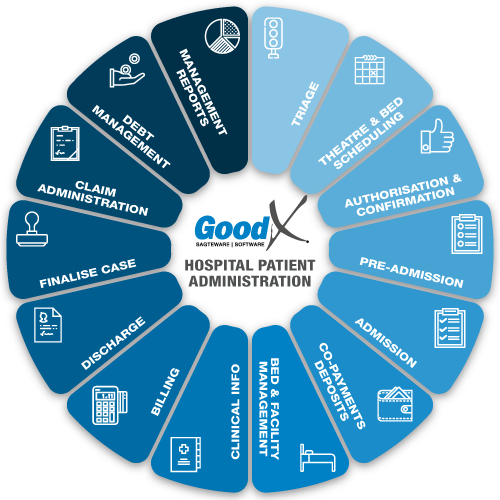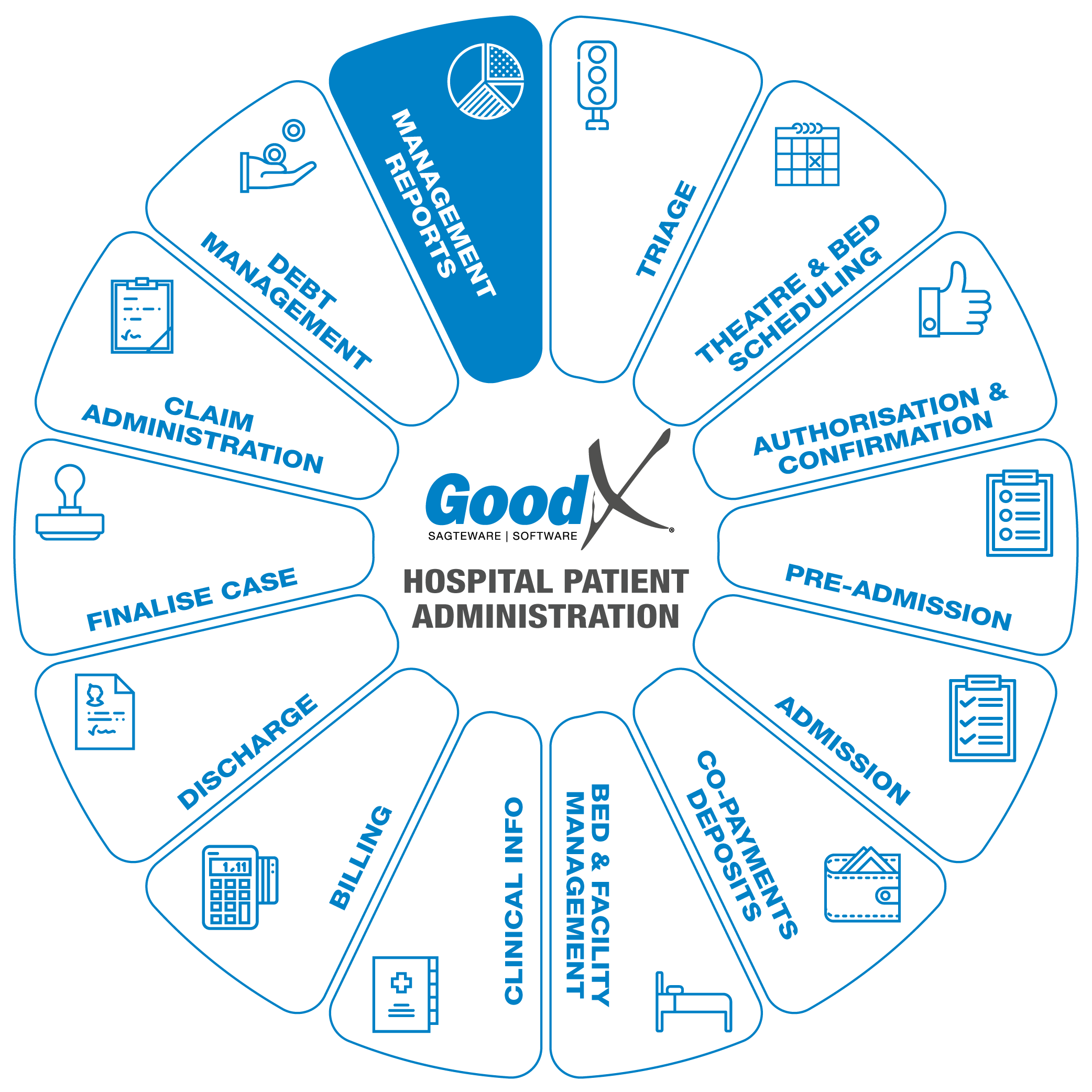Best Practice Guidelines: Hospital Patient Administration

Copyright © 2019 GoodX Software. All rights reserved.
GoodX online Learning Centre
learning.goodx.co.za
16. Management Reports
Responsible Roles
 |
xxx |
|---|---|
|
|
xxx |
|
|
xxx |
 |
xxx |
 |
xxx |
 |
xxx |
 |
xxx |
 |
xxx |
 Purpose of Management Reports
Purpose of Management Reports
Critical Steps of Management Reports
Reporting is an important factor in any hospital. Reports assist in managing the hospital and making important future financial and management choices. Reporting assists in deciding the correct management path for the hospital.An important factor to remember on reporting, reports can be wonderful with a lot of information, but the reports can only report on the information that is given to them, if the information that is captured into the system is untrusted, the reports will be untrusted. The correct report must also be used for the correct results that are required.
Reports on Patient and Hospital Management:
- Debtor / Patient Report writer
- Case report writer
- Theatre Usage
- Theatre lists
- Fixed fees / Per Diem
- Discharged not final billed
- Finalized not EDI
- Active cases not in a bed location
- Cases without Authorization
- Census list for beds
- Occupied beds list / Unoccupied beds list
- Case statistics
- Patient birthday list
- Cash register reconciliation
Finacial reports:
- Full age analysis, Patient and Medical aid
- Discharge date age analysis
- Finalized Date age analysis
- Unlinked receipts
- Audit trail on Debtors
- Audit trail on Creditors
- Audit trail on Ledger accounts
- VAT
- Invoices outstanding
- Debtor transaction Drilldown (Daybook)
- Bank reconciliation
- Income statement
- Balans sheet
- Trial Balance
- Asset management
Stock Management reports:
- Stock usage
- Storck report writer
- Stock on hand
- Stock movement detail
- Stock movement per period.
Critical Steps of Filing & Storage of patient file
Hospitals will have a hardcopy file on the patient. Important information on a patient will be in this file and confidential medical records.
The file will travel with the patient while the patient is admitted in the hospital.
The following is important for filling and storage of the patient hard copy file:
- The patient hard copy file must be kept for 10 years after the patient procedure.
- File the patient file in alphabetic order in a cabinet
- The patient file must be finalized and through the whole management process
- No amounts must be still outstanding on the account
- No information must be still outstanding on the account or the file
- The file cabinet must be on the premises of the hospital
- The file cabinet must be in a dry and safe place with minimal access to personnel
The following is important for filling and storage of the patient electronic file:
- The account can be archived if the account is paid in full
- The account must be finalized and through all the management processes.

